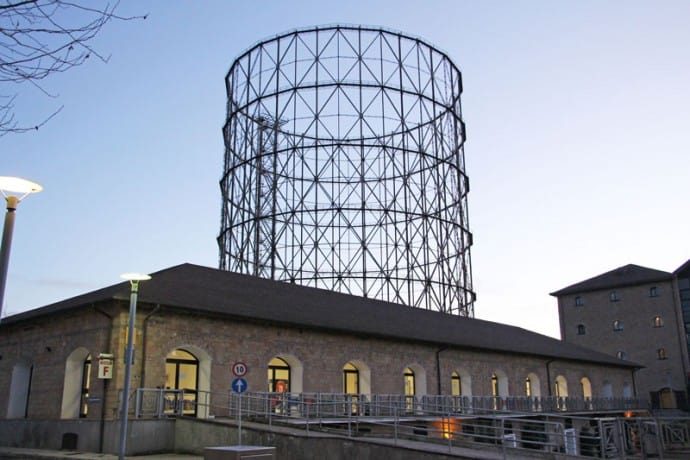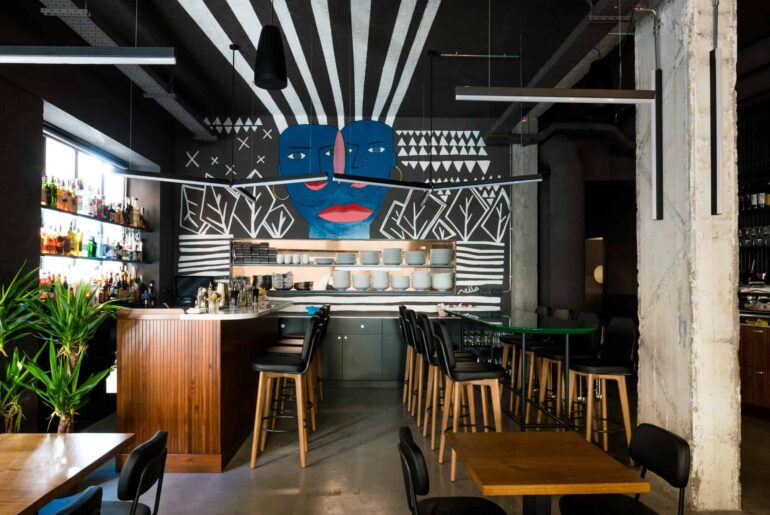Up-and-coming Ostiense: The eclectic neighbourhood changing things up
Once a florid industrial area, Ostiense has fully grown into its status as one of Rome’s most hipster neighborhoods and sought-after Saturday night destination for young Romans. Do not confuse Ostiense with Ostia, Rome’s port. Although Ostiense is named after the Ancient Roman road (Via Ostiensis) connecting Rome with the harbor, Ostiense is just south of the city center, confining with Testaccio on one side and Garbatella on the other. Thanks to a metro stop and university campuses, Ostiense’s popularity has grown exponentially in the past decades. Owning its industrial origins and look, with colorful and eco-friendly street art, frequent festivals, night clubs, and international eateries, Ostiense is the Brooklyn to Trastevere’s Manhattan.
A 2020 article from The Guardian names Ostiense as #8 in a list of the coolest neighborhoods in Europe. Ostiense certainly stands apart from most Roman districts, adorned as it is by 1800 and 1900 architecture as opposed to ancient or baroque buildings. The abandoned gasometer that’s visible from most rooftops in Rome, now a reclaimed space for art and nightfile, has become Ostiense’s very symbol, a reminder that new life can bloom anywhere.
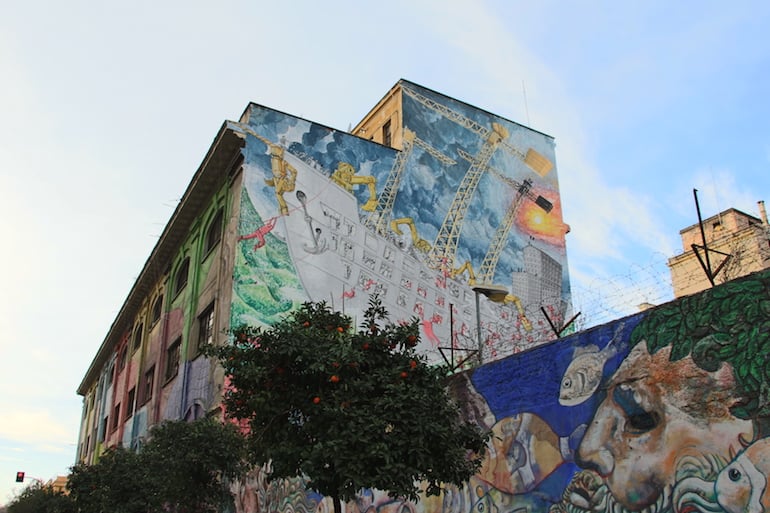
The best restaurants and bars in Rome’s Ostiense
MUST SEE in OSTIENSE
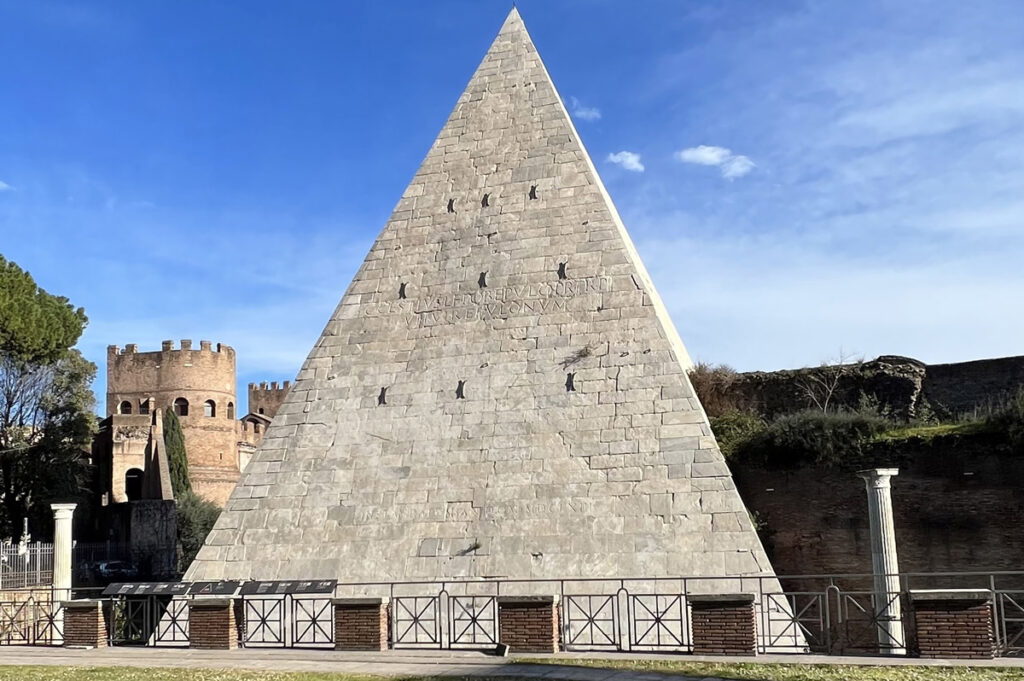
Piramide Cestia
Via Raffaele Persichetti
This ancient pyramid in Rome was built as a tomb for Gaius Cestius, in 12 BC, at a time when Egyptian style was in high fashion in Rome. This impressive structure is one of the best-preserved ancient buildings in Rome, and one that has long fascinated tourists –Goethe was so in awe that he painted a miniature of the pyramid. Today, the Piramide Cestia finds itself conveniently located, close to the Piramide Metro station and the Ostiense train station. Today, you can admire the pyramid from outside any day, while visits are reserved for special occasions.
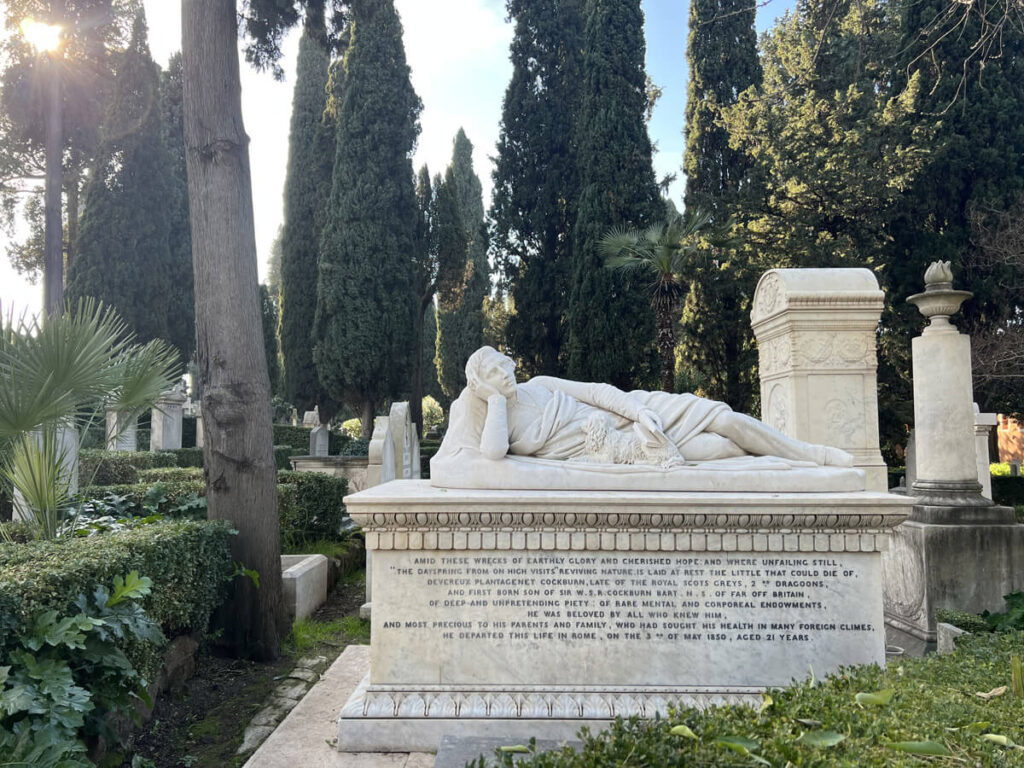
The Non-Catholic Cemetery
Via Caio Cestio, 6
A perhaps unusual site to visit is the Non-Catholic Cemetery just around the corner (entrance from Via Caio Cestio 6). Also known as the Protestant Cemetery, English Cemetery, or the Cemetery of Artists and Poets, this is the resting place of Romantic poets John Keats and Percy Shelley, as well as other notable figures such as Antonio Gramsci, William Story and painter Hendrik Andersen. Single visits are free, but a €5 donation is encouraged. Group visits should be booked in advance.
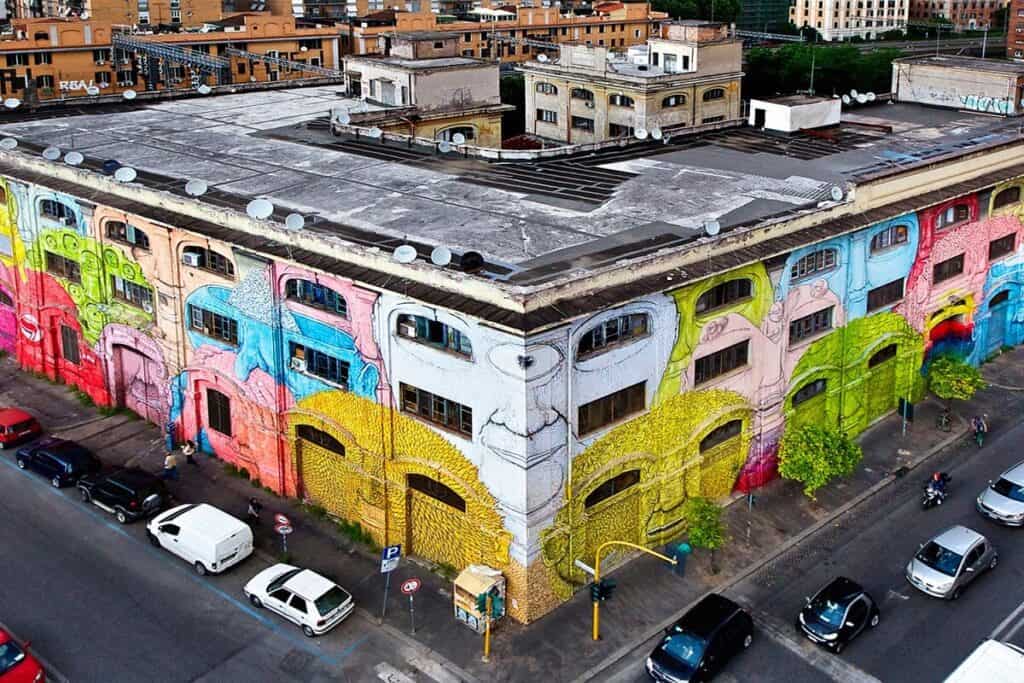
Street Art
Explore Ostiense’s street art on a Vespa
Ostiense has some of the best street art and graffiti in Rome. The most impressive is Hunting Pollution on Via del Porto Fluviale, a heron designed by artist Iena Cruz, painted with air-purifying paint. Don’t miss Black&White Power by Sten&Lex on Via dei Magazzini Generali, which portrays various imaginary Ostiense inhabitants, and across from it is Wall of Fame by JB Rock, representing illustrious artists like Dante Alighieri, Frida Khalo, Jimi Hendricks, Elvis. The best way to see all of Ostiense’s street art is to wander around on foot or by Vespa.
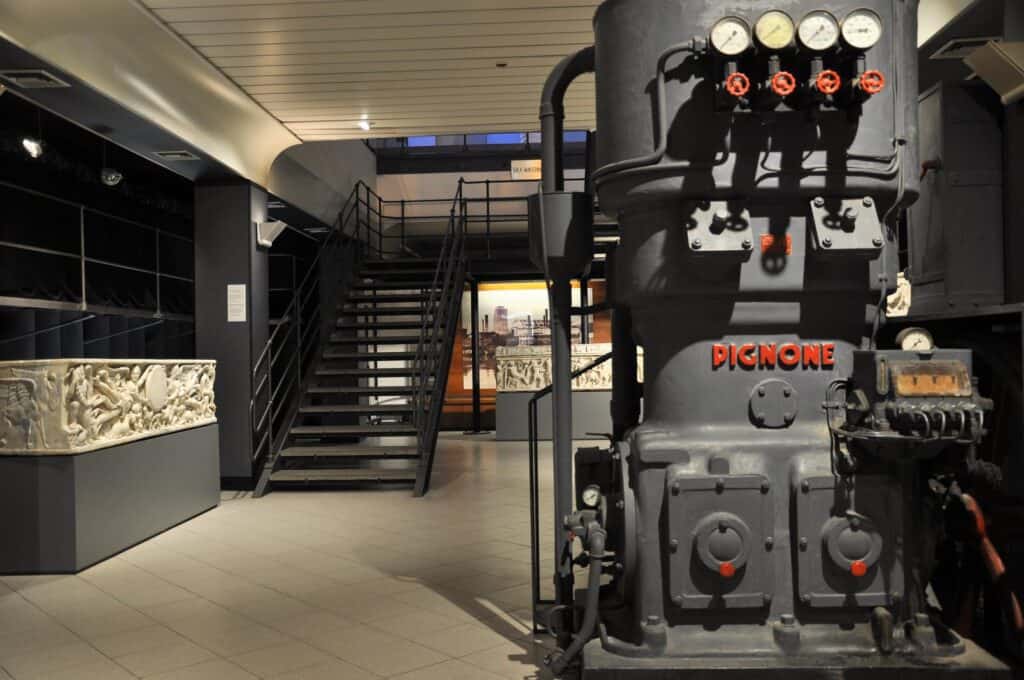
Centrale Montemartini
Via Ostiense, 106
Tues – Sun 9am – 7pm
centralemontemartini.org
A public museum set in a former power plant, Centrale Montemartini is the fascinating complex where modern and Ancient Rome collide. The collection comprises of hundreds of classical works of art, mostly Roman statues, but also sarcophagi, paintings, and archaeolofical finds, which are displayed in an industrial setting among 18th century engines. The eclectic collection is completed by the train carriage of Pope Pious IX. The museum is always free for MIC Card holders, and for everyone on the first Sunday of each month. Opening hours are Tuesday through Sunday 9am-7pm.

Officine Fotografiche
Via Giuseppe Libetta, 1
officinefotografiche.org
Officine Fotografiche (Photographic Workshop) is a non-profit association created to spread awareness and support of the art of photography. A meeting place for photography professionals, amateurs and enthusiasts, Officine Fotografiche has a training center for all levels as well as special workshops, free activities, a library and café.
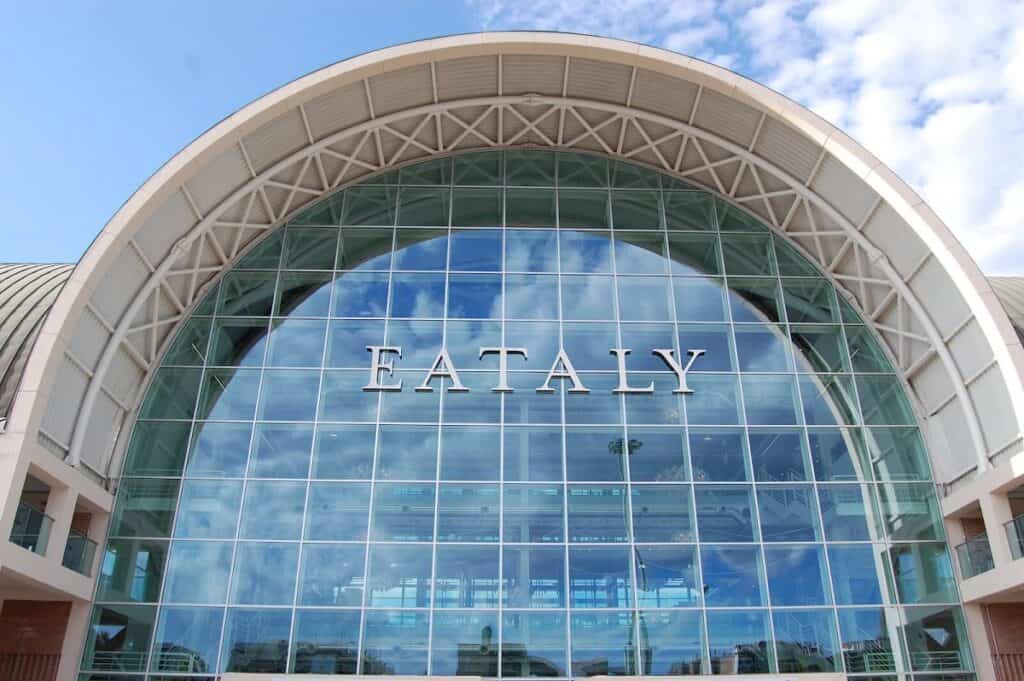
Eataly
Piazzale 12 Ottobre, 1492
eataly.net
A gourmet retreat everywhere in the world, Eataly is the epitome of Italian cuisine and shopping. Eataly Ostiense is one of the largest Eataly points in the world, and it includes 3 different restaurants and a brewery, in addition to the Eataly market. For more information read our full article.
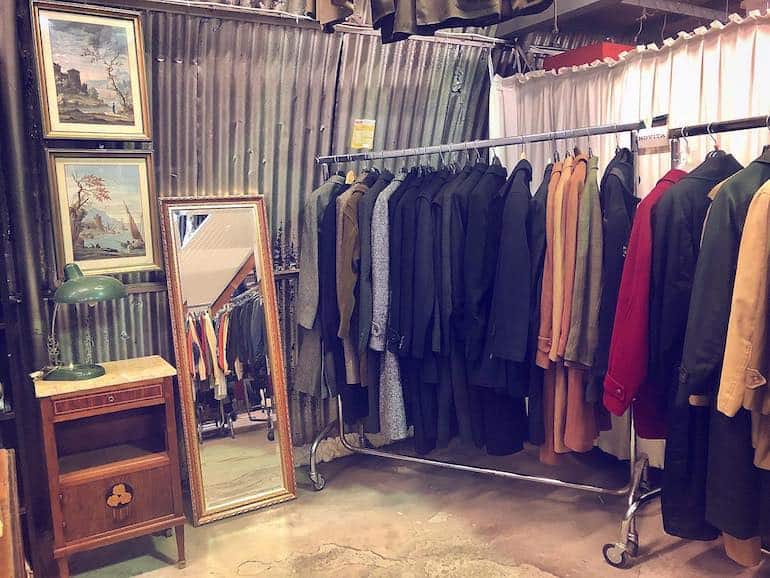
Mercato Vintage Ecosolidale
Via del Porto Fluviale, 2
MercatoVintageEcosolidale
This original market housed in the industrial lofts of Ostiense is where you can come to donate or shop around for everything from furniture, clothes, toys and jewelry. It’s also a sustainable (and fun) way to give back to the community and create a circular economy. Check their website for their opening hours, which may vary.

Parco Schuster
Viale di San Paolo
Across from the colossal Basilica di San Paolo Fuori Le Mura, is a recently established park, which serves as a hangout spot for the youth, frequented any time of day. At night, Parco Schuster hosts many festivals, about music, food, comedy, with a focus on sustainability.
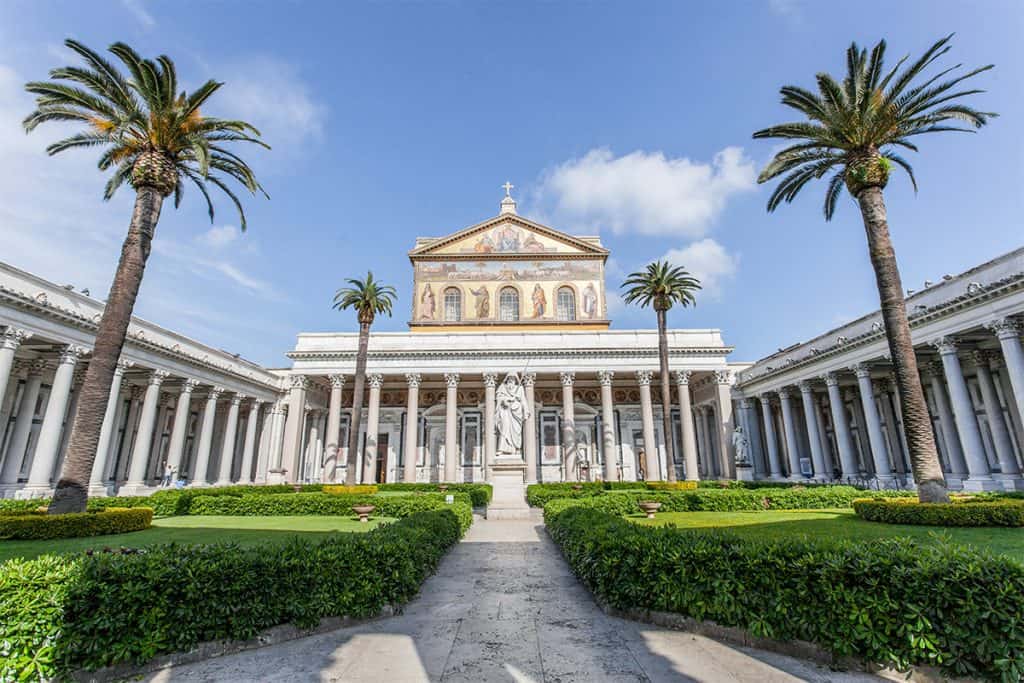
Basilica San Paolo Fuori le Mura
Piazzale San Paolo, 1
Daily 7am – 6.30pm
One of Rome’s 4 papal basilicas, San Paolo Outside The Walls is the largest of them after St. Peter’s (which, technically, isn’t in Rome but in Vatican City). It’s a monumental work of art that dominates its surroundings. The outside steps and gardens are a popular gathering place for locals, while the church proper has been a pilgrimage site since antiquity, as the basilica was built on the legendary place where St. Paul was buried. Inside, majestic gold-plated ceiling, statues, and frescoes await.
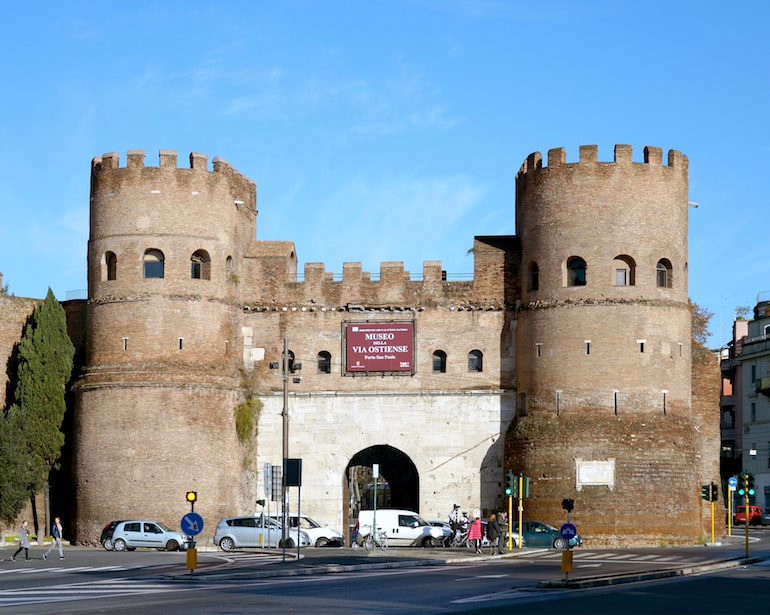
Porta San Paolo
Piazzale Ostiense
Tue-Sun 9am – 1pm
Next to the Piramide Cestia stands Porta San Paolo, one of the few remaining gates of the 3rd century Aurelian Walls of Rome. In antiquity, San Paolo Gate marked the beginning of the road that connected Rome and Ostia. Nowadays it’s the entrance to the Via Ostiense Museum, which is currently closed to the public, with extraordinary openings on special occasions.

